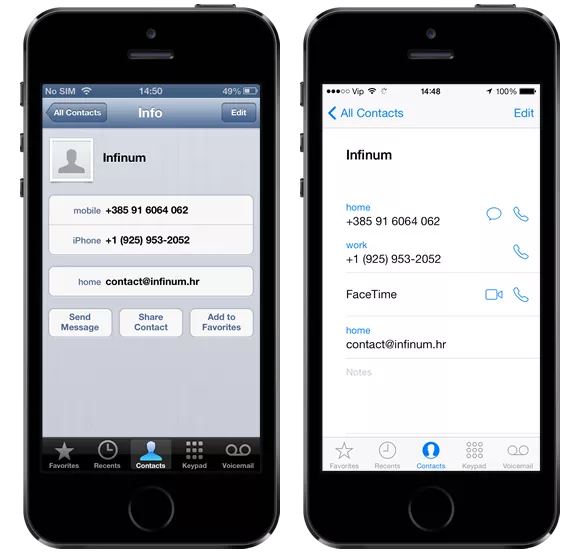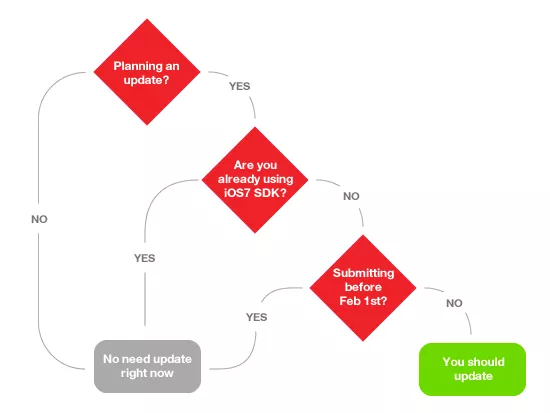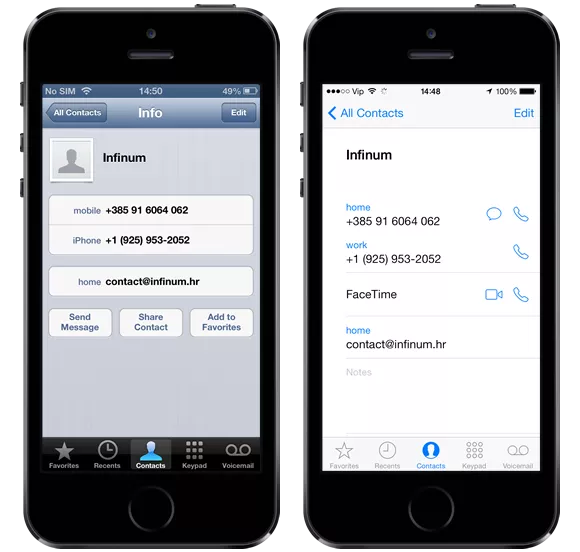Apple has recently announced that, starting from February 1st, all iOS apps and updates need to work seamlessly with iOS 7.
Starting February 1, new apps and app updates submitted to the App Store must be built with the latest version of Xcode 5 and must be optimized for iOS 7.
In technical terms, starting February 1st, all apps submitted to the App Store need to be built with iOS 7 SDK and XCode 5. Anything that does not conform to these terms will be rejected.
In less technical terms, this means that your apps need to make use of the new iOS 7 design and interface.
What is the difference between iOS 7 SDK and the other ones?
The difference is mostly visual. For example, compare the two screenshots below; the left one is the Elements example app back in iOS 6 and before, and the right one is the same app in iOS 7.

This is also the fastest way to determine visually whether an app needs an update. If your app looks like the left one on iOS 7, you will most likely have to update your app to the new SDK.
Do I need to update my app?
There are quite a few ways to answer this question, and they all depend on what the future plans for your app are. The nifty flowchart below should answer most of your questions.

In a nutshell, if you are still not using the new SDK and have an actively developed app, updating is imminent, but you have a small time frame to push critical updates if you have to.
Does this mean that my app won’t work on older versions of iOS?
No. The SDK and the minimal supported versions of iOS are not the same thing, and your app will still work on old versions of iOS you want to support.
Is changing the SDK a lot of work?
It depends. Just switching the SDK is done in a jiffy. However, you still need to make sure there are no wayward visual elements. The design of every app is at least a bit customized and will probably need some tweaking. Adjusting visual elements might also be needed to complement the new flat design if your app looks odd in the new environment.
iOS 7 also brings new gestures, notably, the swipe-to-go-back, so if your app takes advantage of different gestures, another part of upgrading is making sure there is no unwanted interaction between the two.
To put it shortly – it depends on the size of your app and the amount of work you want done.
What will be the consequences of this announcement?
At the time of writing this article, the iOS 7 market share is at 78% percent and rising. Presumably, this is one of the decisions made to push the percentages up and make the development for previous versions of iOS obsolete. Apple is pushing hard to keep the users up to date with their release cycle, but there will always be a minor percentage of users who do not update, whatever reason there might be for not doing so.
For developers, this is a welcome change. Having to support more than the latest SDK is a rather complicated development process, and this will make things much simpler.
On the other hand, this decision also means more work for apps that have not yet been converted to iOS 7 SDK, and are planning an update soon, possibly pushing the date of the update a bit further. It also means that if you are targeting a significant number of users still using iOS 6, there will be some extra work to make sure everything looks as intended.











